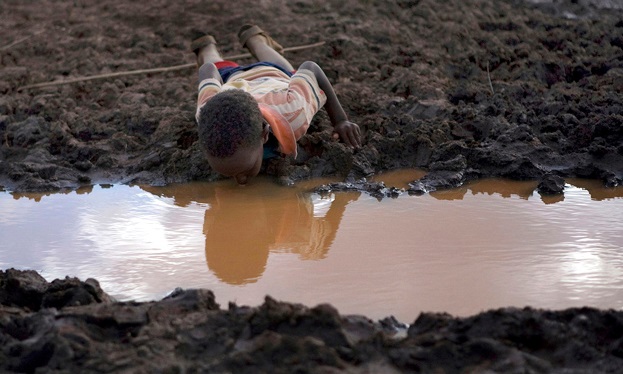
Worldwide droughts - Investing in preparedness to be more resilient is the key
“People die because they are not prepared to face the impacts of the drought – because their livelihoods are not resilient enough.”
That’s what FAO Director-General José Graziano da Silva said at the FAO seminar on 19th June 2017 speaking about people who risk dying because of heavy droughts.
Recalling the 2011 drought in Somalia that saw over 250,000 people perish from hunger, Graziano da Silva said:
“For years, the focus has been responding to droughts when they happen, rushing to provide emergency assistance and to keep people alive, of course, that is important. Investing in preparedness and resilience is essential.”
Doing so, the aim is putting countries on a footing to act quickly before it is too late. Farmers and rural communities are better positioned to cope with extreme weather when it does hit.
John Mutorwa, Minister for Agriculture, Water and Forestry of Namibia, said that in these times of climate change, drought has emerged as a challenge that all countries will be forced to face, again and again.
“It is not a question of whether drought will come, it is a question of: Drought will come, and therefore, we have to be prepared,” the Minister said, underscoring the importance of the seminar’s theme, “Predict, Plan, Prepare: Stop Drought becoming Famine.”
“WMO provides guidance and scientific information to strengthen national services responsible for addressing drought risks to agriculture,” said WMO Secretary General Petteri Taalas. “We encourage countries to take early action against drought and to move towards a more proactive approach.”
International Fund for Agriculture Development (IFAD) President Gilbert F. Houngbo in his remarks emphasized the need break the cycle of crisis, disaster and relief and called on the international community to be proactive and to think not just of today’s emergencies, but also of how to prevent tomorrow’s.
“This means investing in smallholder farmers to help them address productivity challenges, give them access to markets and finance and most importantly encourage climate-smart agriculture so that when the drought inevitably comes, they have the tools they need to survive and thrive,” said Houngbo.
Rebooting drought response efforts
How? By pressing. The need for As the planet’s climate changes, severe dry-spells are becoming more and more frequent. Since the 1970s, the land area in the world affected by situations of drought has doubled.
Where the mainstray remains agriculture, the burden is extremely high. FAO studies have shown that, over 80 percent of damage and losses caused by drought are born by agriculture in the developing world.
In Africa, for example, between 2005 and 2016, 84 droughts affected 34 different African nations.
An ounce of prevention
At FAO seminar, experts from the academic, science, humanitarian, and policymaking communities will take part in a number of break-out sessions focusing on what needs to change in terms of drought management and how to make that change happen; ways to connect farmers to improved technologies to better cope; options for shifting from reactive to proactive responses, and how to slot drought management into the 2030 development agenda.
Partnering to empower small farmers
Currently, FAO and the WMO (World Meteorological Organization) signed a memorandum of understanding that will see them deepen their cooperation to respond to climate variability and climate change, which, according to the agreement, “represents an urgent and potentially irreversible threat to human societies, natural ecosystems and food security.”
Via their strengthened partnership, the two organizations will work on improving agro-meteorological data, tools and methods and improve access by small farmers to products and services that can help them anticipate and proactively prepare for droughts, entre alia.


